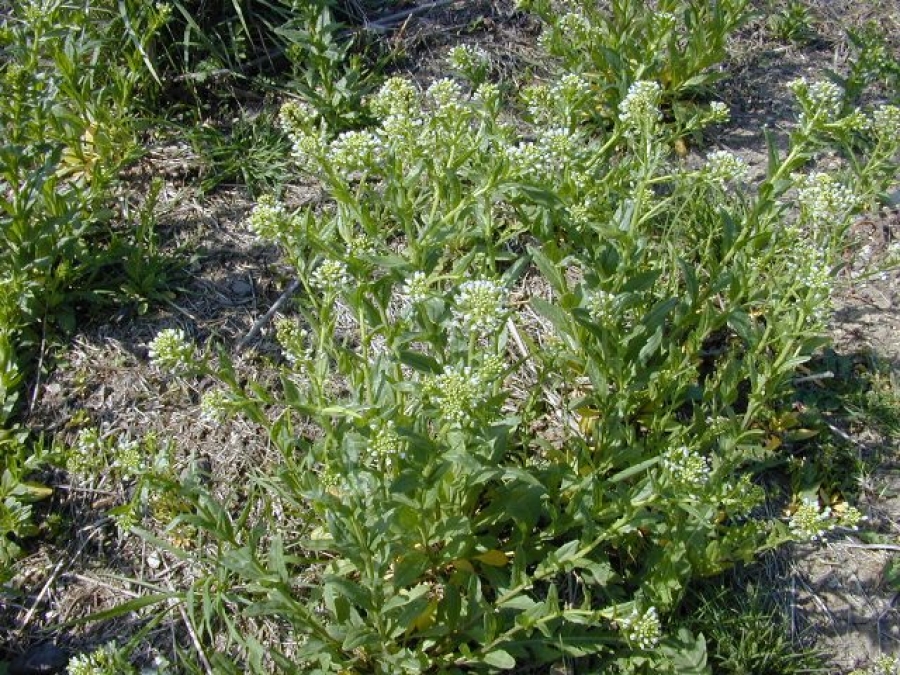Cardaria draba
Description
- Native to Europe and Asia
- Long-lived perennial
- In the Mustard family
- White flowers with four petals
- Requires full sun and moderately moist to dry soil
- Deep vertical taproots and horizontal, rhizomatous roots
- Reproduces by seed (1000 to over 4000 per plant) and roots
Consequences of invasion
- Invades rangelands and pastures, impacting livestock.
- Livestock will not eat hoary cress.
- Milk and meat can be tainted if the plant is eaten by stock, condition persists for a week.
- Highly competitive, outcompetes native vegetation in rangelands.
- Decreases crop yields.
Status in the CKISS region
- Hoary cress is currently classified as Contain on the CKISS Annual Priority List.
- There are established populations in the Lower Arrow Invasive Plant Management Area (IPMA). The goal is to contain currently infested areas and to not allow further spread.
- Hoary cress has not been found in the Kaslo or Nakusp IPMAs, but has been found with a very limited distribution in other parts of the region.
- If you notice this plant growing outside of its containment area, please report it!
- To learn more about how CKISS classifies and manages invasive species, see our Invasive Species Priority Lists page.
Integrated pest management options
- Use the PlantWise resource to choose non-invasive plants for your garden.
- Pull or dig small infestations when soil is moist.
- Proper pasture and rangeland management, minimizing soil disturbance and overgrazing.
- Chemical control may work on larger infestations.


